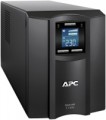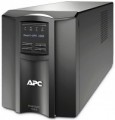Full load operating time
UPS continuous operation time from a fully charged battery when connected to a load with a power equal to the UPS output power (maximum or effective, depending on the type of load, see the relevant paragraphs for details). For a UPS designed to work with a home or office PC, a time of about 10-15 minutes is considered sufficient, this is enough to save data and complete work. To power servers, it is worth using devices with an operating time
of 20 minutes or more.
Half load operating time
UPS continuous operation time from a fully charged battery when connected to a load with a power equal to half the output power of the UPS (maximum or effective, depending on the type of load, see below for details). The operating time with such a load is much longer than for a full load, and even in the simplest models it can reach 20-30 minutes.
Input voltage range
In this case, the input voltage range is implied, in which the UPS is able to supply a stable voltage to the load only due to its own regulators, without switching to the battery. For redundant UPSs (see "Type") this range is quite small, approximately 190 to 260 V; for interactive and especially inverter ones, it is much wider. Some UPS models allow you to manually set the input voltage range.
Max. current
The maximum current drawn by the UPS. In fact, the current reaches its maximum value only when the UPS is operating from the mains with maximum load power and a completely discharged battery. However, when calculating the load on the power grid, this parameter should be taken into account.
Input frequency
The operating frequency of the alternating current supplied to the input of the UPS — or more precisely, the frequency range of this current in which the device can supply the required power to the load due to its own regulators, without using a battery. When this range is exceeded, the UPS switches to battery mode. The smallest input voltage range is reserved for standby UPSs (see "Type"), the largest for inverter UPSs.
Rated output power
The effective output power of the UPS is, in fact, the maximum active power of the load that can be connected to the device.
Active power is consumed directly for the operation of the device; it is expressed in watts. In addition to it, most AC devices also consume reactive power, which is "wasted" (relatively speaking) is spent by coils and capacitors. Apparent power (denoted in volt-amperes) is precisely the sum of active and reactive power; it is this characteristic that should be used in accurate electrical calculations. See "Maximum output power" for details; here we note that when selecting a UPS for a relatively simple application, it is quite possible to use only effective power. This is at least easier than converting the watts claimed in the characteristics of the connected devices into full power volt-amps.
The most modest modern "uninterruptibles" give out
less than 500 watts.
501 – 1000 W can be considered an average value,
1.1 – 2 kW is above average, and in the most powerful models this figure
exceeds 2 kW and can reach very impressive values (up to 1000 kW or more in some industrial class UPS).
Voltage control
The ability to change the output voltage of the UPS at the request of the user. Electrical networks in different countries have different voltages: for example, in the post-Soviet space, the standard is 230 V, in European countries — 230 V. Small differences in appearance may not play a significant role, however, voltage mismatch can adversely affect the efficiency and durability of electrical appliances.
Voltage regulation allows you to choose the optimal value, thus providing the best conditions for the operation of electronics.
Efficiency
Efficiency (coefficient of performance) in the case of a UPS is the ratio of its output power to the power consumed from the network. This is one of the main parameters that determine the overall efficiency of the device: the higher the efficiency, the less energy the UPS wastes (due to heating parts, electromagnetic radiation, etc.). In modern models, the efficiency value can reach 99%.
Battery connection voltage
Rated voltage of external batteries that can be used in the UPS.
For more information about such batteries, see "
Connecting an external battery ", here it is worth saying that the voltage of the external battery must correspond to the voltage for which the "uninterruptible" is designed. If these parameters differ, at best, the UPS simply “will not start”, and at worst, overloads and even a fire are possible.
In general, the more powerful the UPS, the higher, usually, the voltage of the external batteries for which it is designed. However, there is no hard dependency here. And some models even allow several voltage options, for example 96/108/120 V. Also note that a battery with the required voltage can be assembled from several batteries with a lower number of volts connected in series: for example, for 36 V, you can use 3 batteries of 12 AT.
Separately, it is worth emphasizing that the standard voltages for most modern uninterruptible power supplies are multiples of 12 V, however, car batteries cannot be used in such devices. Despite the identical voltage, such batteries are designed for a fundamentally different format of operation, and their use in a UPS is fraught with, at best, incorrect operation of the device, and at worst, fires and even explosions.

